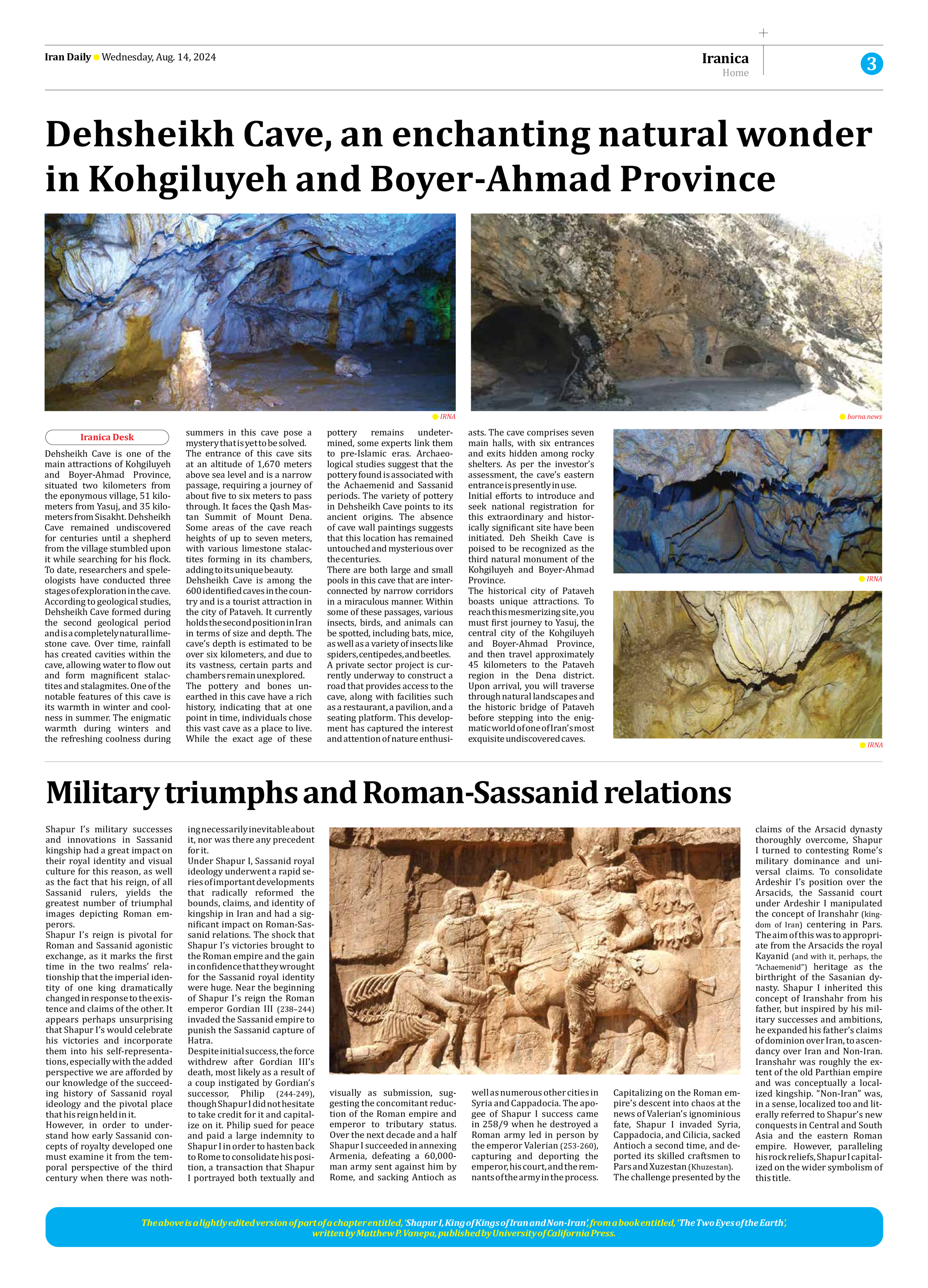
Copy in clipboard...
Military triumphs and Roman-Sassanid relations
Shapur I’s reign is pivotal for Roman and Sassanid agonistic exchange, as it marks the first time in the two realms’ relationship that the imperial identity of one king dramatically changed in response to the existence and claims of the other. It appears perhaps unsurprising that Shapur I’s would celebrate his victories and incorporate them into his self-representations, especially with the added perspective we are afforded by our knowledge of the succeeding history of Sassanid royal ideology and the pivotal place that his reign held in it.
However, in order to understand how early Sassanid concepts of royalty developed one must examine it from the temporal perspective of the third century when there was nothing necessarily inevitable about it, nor was there any precedent for it.
Under Shapur I, Sassanid royal ideology underwent a rapid series of important developments that radically reformed the bounds, claims, and identity of kingship in Iran and had a significant impact on Roman-Sassanid relations. The shock that Shapur I’s victories brought to the Roman empire and the gain in confidence that they wrought for the Sassanid royal identity were huge. Near the beginning of Shapur I’s reign the Roman emperor Gordian III (238–244) invaded the Sassanid empire to punish the Sassanid capture of Hatra.
Despite initial success, the force withdrew after Gordian III’s death, most likely as a result of a coup instigated by Gordian’s successor, Philip (244-249), though Shapur I did not hesitate to take credit for it and capitalize on it. Philip sued for peace and paid a large indemnity to Shapur I in order to hasten back to Rome to consolidate his position, a transaction that Shapur I portrayed both textually and visually as submission, suggesting the concomitant reduction of the Roman empire and emperor to tributary status. Over the next decade and a half Shapur I succeeded in annexing Armenia, defeating a 60,000-man army sent against him by Rome, and sacking Antioch as well as numerous other cities in Syria and Cappadocia. The apogee of Shapur I success came in 258/9 when he destroyed a Roman army led in person by the emperor Valerian (253-260), capturing and deporting the emperor, his court, and the remnants of the army in the process. Capitalizing on the Roman empire’s descent into chaos at the news of Valerian’s ignominious fate, Shapur I invaded Syria, Cappadocia, and Cilicia, sacked Antioch a second time, and deported its skilled craftsmen to Pars and Xuzestan (Khuzestan).
The challenge presented by the claims of the Arsacid dynasty thoroughly overcome, Shapur I turned to contesting Rome’s military dominance and universal claims. To consolidate Ardeshir I’s position over the Arsacids, the Sassanid court under Ardeshir I manipulated the concept of Iranshahr (kingdom of Iran) centering in Pars. The aim of this was to appropriate from the Arsacids the royal Kayanid (and with it, perhaps, the “Achaemenid”) heritage as the birthright of the Sasanian dynasty. Shapur I inherited this concept of Iranshahr from his father, but inspired by his military successes and ambitions, he expanded his father’s claims of dominion over Iran, to ascendancy over Iran and Non-Iran. Iranshahr was roughly the extent of the old Parthian empire and was conceptually a localized kingship. “Non-Iran” was, in a sense, localized too and literally referred to Shapur’s new conquests in Central and South Asia and the eastern Roman empire. However, paralleling his rock reliefs, Shapur I capitalized on the wider symbolism of this title.







